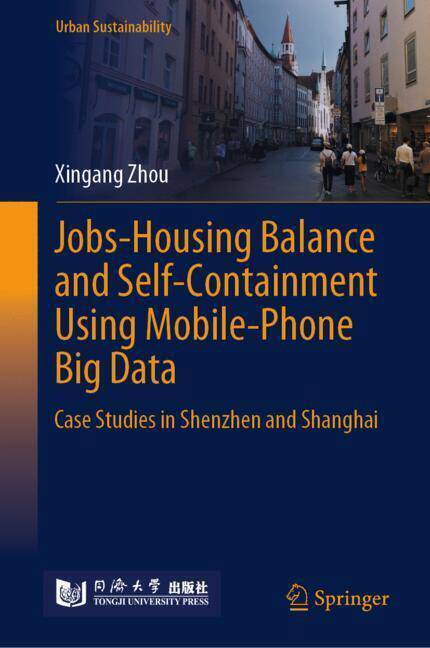
- Retrait gratuit dans votre magasin Club
- 7.000.000 titres dans notre catalogue
- Payer en toute sécurité
- Toujours un magasin près de chez vous
- Retrait gratuit dans votre magasin Club
- 7.000.0000 titres dans notre catalogue
- Payer en toute sécurité
- Toujours un magasin près de chez vous
Jobs-Housing Balance and Self-containment Using Mobile-phone Big Data
Case Studies in Shenzhen and Shanghai
Xingang ZhouDescription
This book addresses the analysis of self-containment of employment (SCE), which measures journey-to-work trips among the percentage of workers who work locally. High SCE encourages the use of non-motorized transport and reduces transport-related energy consumption. In this book, mobile phone location data is employed to assess journey-to-work trips and explore spatial variations in SCE at multiple geographic scales. It finds that SCE is significantly higher in the suburbs than that in the central urban areas and tends to decrease as the spatial analysis unit shifts from the macro to the micro scale. The relationship between Jobs-housing balance is found to be more important in self-containment of employment for secondary-sector workers compared with that for tertiary-sector workers. Secondary-sector workers tend to reside near their workplaces because of relatively balanced jobs and housing, whereas tertiary-sector workers tend to reside farther away from their workplaces to save housing cost.
A mixed-use index (MUI) in terms of employment is examined. The interconnections between MUI and SCE are examined in both industrial and commercial areas, to gauge the effect of the industrial-residential mix or commercial-residential mix on SCE.
This book will enhance readers' understanding of the spatial variations in SCE at multiple scales. In addition, its investigation of the effect of mixed use on SCE will shed new light on the relationship between land use and journey-to-work patterns.
Spécifications
Parties prenantes
- Auteur(s) :
- Editeur:
Contenu
- Nombre de pages :
- 95
- Langue:
- Anglais
- Collection :
Caractéristiques
- EAN:
- 9789819781843
- Format:
- Livre relié
- Dimensions :
- 155 mm x 235 mm







